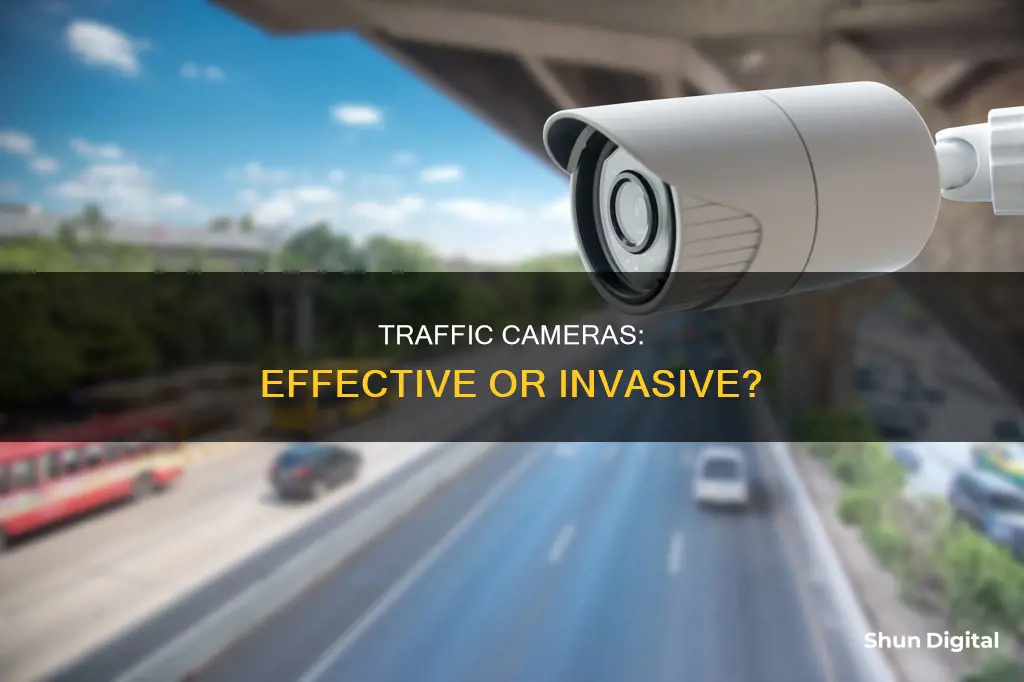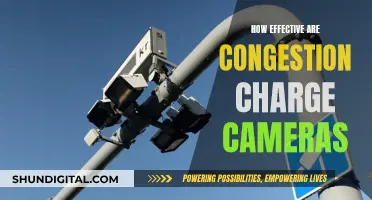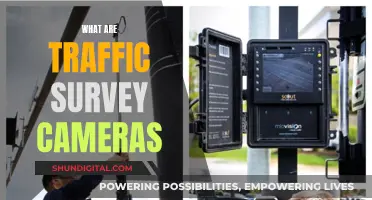
Traffic cameras are commonplace in cities across the United States, but do they make roads safer? There are two types of traffic cameras: automated enforcement cameras and non-enforcement cameras. Automated enforcement cameras, such as red light cameras and speed cameras, issue tickets and violations. Non-enforcement cameras, such as traffic sensor cameras and automated number plate recognition (ANPR) cameras, monitor traffic speeds and conditions. While some argue that traffic cameras improve road safety and reduce accidents, others claim that they do not make a significant difference or even increase accidents. For example, red light cameras may decrease the number of vehicles running red lights, but they could also increase the number of rear-end accidents caused by sudden stops. Similarly, speed cameras are thought to reduce the severity of collisions by lowering vehicle velocity, but studies show conflicting results on whether they decrease the number of collisions. Overall, the effectiveness of traffic cameras in improving road safety is a complex issue that requires further investigation.
| Characteristics | Values |
|---|---|
| Purpose | To detect the arrival of vehicles at an intersection and relay that to the signal control system |
| Effectiveness | May not improve public safety; evidence shows they are effective at decreasing the number of vehicles running red lights but may increase the number of rear-end accidents |
| Function | To measure traffic flow and determine traffic light timing |
| Footage | Usually captures short footage or photos; footage is often stored for a few days |
| Tickets | Tickets are issued to the registered owner of the vehicle |
What You'll Learn

Traffic cameras can help reduce certain types of accidents
Traffic cameras can be an effective way to reduce certain types of accidents. The presence of cameras can deter speeding, which is a major factor in the severity of crashes. Studies have shown that when drivers are aware of the presence of cameras, they are less likely to speed, thereby reducing the risk of serious injury or death in the event of a collision. This wastage was evident in a Maryland study, which found a 62% decrease in drivers exceeding the speed limit by more than 10 miles per hour after cameras were installed.
The effectiveness of speed cameras in reducing crashes has been widely studied, and research suggests that injury crash reductions are likely to be in the range of 20 to 25%. Additionally, an academic review of multiple studies found a decrease in injury crashes following the installation of speed cameras, with reductions ranging from 11% to 44% for crashes resulting in fatalities or serious injuries.
The benefits of traffic cameras were also observed in New York City, where speeding decreased by an average of 30% in areas with 24/7 speed camera enforcement. This led to a reduction in injuries and traffic fatalities, making the streets safer for all road users.
Furthermore, speed cameras can be particularly effective on major city streets, with the Department of Transportation noting that fixed units can reduce injury crashes on urban principal arterials by up to 47%. This highlights the potential for traffic cameras to significantly enhance road safety, especially in urban areas.
While some may argue that traffic cameras are controversial due to concerns about government surveillance or revenue generation, the primary goal of these cameras is to prevent speed-related crashes and save lives. The reduction in speeding and the subsequent decline in injuries and fatalities demonstrate the positive impact of traffic cameras in improving road safety.
Ohio's Camera Tickets: Mail Delivery and Due Dates
You may want to see also

They don't improve overall safety
Traffic cameras are controversial. While some people believe they are an effective way to improve road safety, others disagree. In this section, we will explore the argument that traffic cameras do not improve overall safety.
One of the main criticisms of traffic cameras is that they do not actually reduce the number of accidents. A study by Justin Gallagher and economist Paul J. Fisher examined police-recorded traffic accidents in three large Texas cities over a 12-year period. They found no evidence that red-light cameras improved public safety. The number of accidents, individuals injured, and incapacitating injuries requiring ambulance transport remained unchanged.
Another study in Phoenix, Arizona, investigated the effects of speed cameras on a 26-mile segment of highway. Researchers compared collision data from before, during, and after the implementation of speed cameras, and found no significant difference in the number of motor vehicle collisions.
Proponents of traffic cameras argue that they deter dangerous driving behaviour. While this may be true, the cameras can also have unintended consequences. For example, drivers who would have otherwise proceeded through an intersection when the light turned yellow may now attempt to stop suddenly, increasing the risk of rear-end accidents. This was observed in the Texas study, where the number of "T-bone" accidents decreased after the removal of red-light cameras, but all other types of accidents increased by 18%.
In addition, some people view traffic cameras as an invasion of privacy and a form of "Big Brother" government surveillance. There is also criticism that these cameras are simply a way for local governments to increase revenue through fines.
While the intention behind traffic cameras may be to improve safety, the evidence suggests that they do not have a significant impact on reducing accidents. In some cases, they may even contribute to an increase in certain types of accidents. Therefore, it is important to carefully consider the potential benefits and drawbacks of implementing such measures.
Straightening Images: Camera Raw's Powerful Tool
You may want to see also

Cameras can increase rear-end accidents
While traffic cameras are often implemented to improve road safety, there is evidence to suggest that they can have the opposite effect, particularly in terms of increasing rear-end accidents.
The fear of fines may cause some drivers to perform sudden stops, leading to an increased risk of being rear-ended. This phenomenon is supported by several studies and reports. For example, a Chicago-focused study found a 22% increase in injuries from rear-end accidents, overshadowing the 15% reduction in injuries from right-angle collisions. Similarly, in Fort Collins, Colorado, there was an 83% increase in total accidents after the installation of red-light cameras.
One of the main reasons for the increase in rear-end accidents is the sudden stopping behaviour of drivers. Some drivers who would have otherwise proceeded through a yellow or red light will now attempt to stop abruptly to avoid a fine, increasing the risk of being hit from behind. This was reflected in a study of three large Texas cities, where it was found that while red-light cameras reduced the number of vehicles running red lights, there was no significant decrease in the total number of accidents.
The impact of red-light cameras on rear-end accidents is not limited to a specific region or city. Reports from various media outlets and studies have shown an increase in rear-end collisions at intersections with red-light cameras. For instance, in Oceanside, California, there was an 800% increase in rear-end accidents, while in Portland, Oregon, rear-end crashes increased by 140%.
The contradictory effects of red-light cameras on traffic safety highlight the complexity of the issue. While the number of accidents caused by vehicles running red lights may decrease, the number of rear-end accidents is likely to increase. This suggests that the overall effect of red-light camera programs on vehicle accidents and injuries is dependent on the net impact of these two factors, which can vary depending on the location and other factors.
Leotax No. 13744: Unveiling the History of a Classic Camera
You may want to see also

Footage is often not stored long-term
The duration for which traffic camera footage is stored varies from one jurisdiction to another. Most jurisdictions keep the footage for a period of 30 to 90 days before it is deleted or overwritten. However, some jurisdictions may keep it for as little as 24 hours, while others may retain it for up to five years.
For example, in New York City, the Department of Transportation stores traffic camera footage for 30 days before it is deleted. On the other hand, in Los Angeles, California, traffic camera footage is stored for up to five years.
The storage duration of traffic camera footage depends on the policies set by local authorities and the purpose for which it was recorded. For instance, in California, red light camera footage must be retained for at least 30 days but can be kept longer if needed for an investigation or legal proceeding. In New York City, speed camera footage must be deleted after 60 days unless it is needed as evidence in a court case.
The storage technology used also affects how long traffic camera footage can be stored. Some systems use hard drives or solid-state drives with limited storage capacities, while others use cloud-based storage solutions that offer virtually unlimited storage capacity.
While there are no federal laws governing how long traffic camera footage must be stored, some states and municipalities have specific regulations regarding the retention of surveillance footage. For example, under European Union regulations (GDPR), personal data must be deleted after a certain period unless there is a legitimate reason for retaining it.
To address privacy concerns, some jurisdictions have implemented data protection regulations and encryption and access controls. Longer retention periods may also increase the amount of data that needs to be reviewed during investigations, leading to potential delays and increased costs.
Building a Camera Battery: Ion Basics and Beyond
You may want to see also

Dummy cameras are sometimes used
The use of dummy cameras is part of a broader strategy of traffic enforcement that includes the use of actual cameras. Traffic enforcement cameras are used to detect motoring offenses, such as speeding, vehicles going through a red traffic light, unauthorized use of a bus lane, or recording vehicles inside a congestion charge area. They may be mounted beside or over a road or installed in an enforcement vehicle. A worldwide review of studies found that speed cameras led to an 11% to 44% reduction in fatal and serious injury crashes.
However, the use of traffic enforcement cameras is not without controversy. Some people argue that they make motorists slam on their brakes, increasing rear-end collisions, violate due process because there is no live witness, and unfairly penalize the vehicle owner when they were not driving. Additionally, there are concerns about privacy and the potential for governments to establish mass surveillance of vehicle movements.
Traffic Cameras: Where Are They Watching?
You may want to see also
Frequently asked questions
Traffic cameras are used to detect the arrival of vehicles at an intersection and relay that information to the signal control system. They can also be used to identify the liable party in an accident or to help establish liability in an auto accident, especially in cases of disputed liability.
Whether traffic cameras record footage and how much footage they record depends on the type of camera. Many traffic enforcement cameras, including red-light cameras, capture photos or short video footage of cars that move through the intersection after the light turns red. Speeding cameras may also capture around 12 seconds of footage when a vehicle speeds by them.
The effectiveness of traffic cameras is debated. While they can help to reduce certain types of accidents, such as T-bone collisions, they may also increase the number of rear-end accidents caused by sudden stops. In addition, some people view traffic cameras as an invasion of privacy or a form of government overreach.







